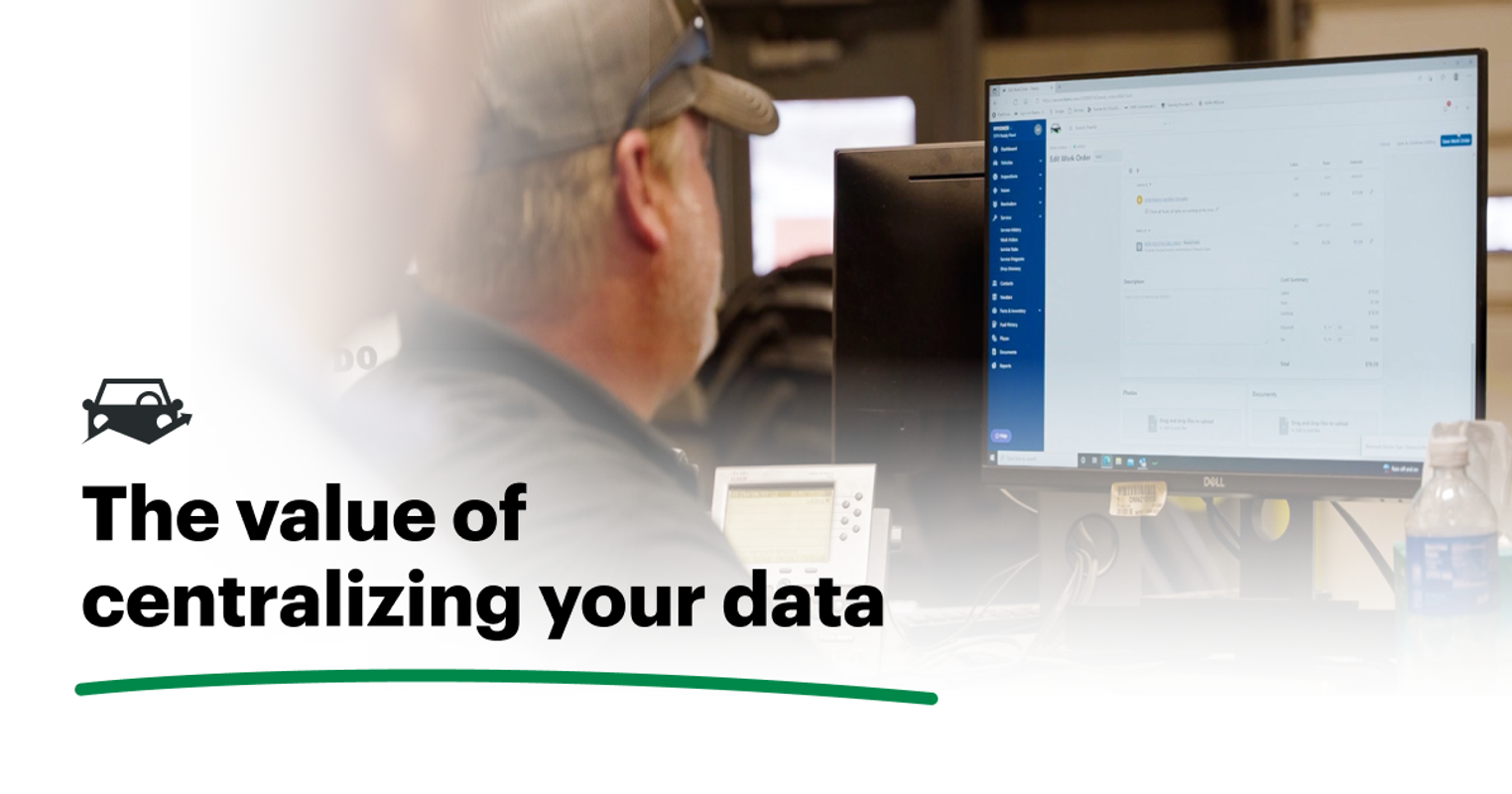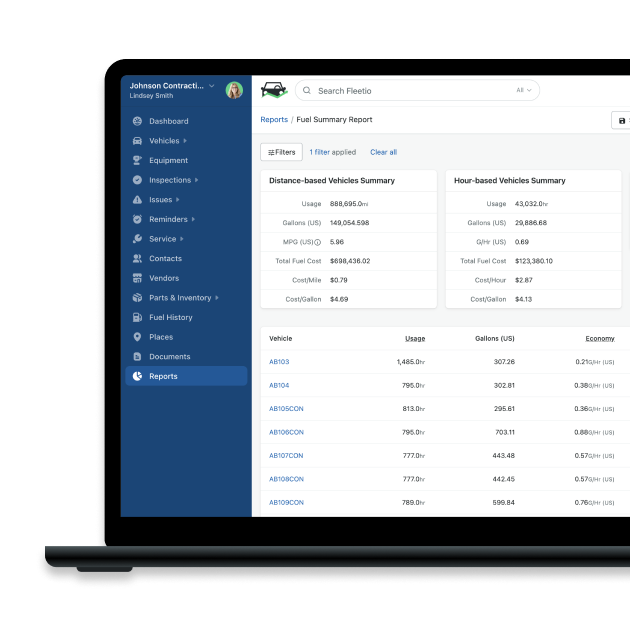Creating a Single Source of Truth for Fleet Management
In the same way that tool boxes keep everything your technicians might need in one convenient place, fleet management systems can provide the same utility to fleet managers through data integrations.
Jun 25, 2024
5 min read

To stay on top of everything going on with their assets, many fleet managers rely on a suite of solutions that are each responsible for a different aspect of their operations. For keeping track of their parts inventory, they might maintain a spreadsheet. If their vehicles are equipped with telematics devices, there's a good chance they watch over them via their provider's online portal. And for monitoring how much they're paying at the pump, they probably have their fuel card provider's website bookmarked.
While plenty of fleet managers get by with this approach, having to constantly jump between solutions can be tedious and highly inefficient. Thankfully, integrated fleet management information systems (FMISs) allow organizations to eliminate that hassle by consolidating all of their fleet data onto one platform. In other words, integrated FMISs provide fleets with a single source of truth (SSOT)-- a one-stop shop for all the information they need to handle their fleet operations.
To help you streamline your fleet management setup, let's explore how integrated FMISs unify data and the advantages having a single source of truth can bring to your organization.
How FMISs Deliver a Single Source of Truth
In the software space, connections that allow information to be exchanged between data sources are called "integrations." Integrated FMISs receive and relay data from all sorts of fleet-related solutions so fleet managers can access everything they need from just one platform.
For example, it's very common for FMISs to have integrations with fuel card providers. After a one-time setup where you connect your fuel card account to your FMIS account, fuel transaction data is automatically synced between the two. Other integrations (like those for GPS trackers, telematics devices, safety and compliance solutions, etc.) typically operate in similar manners.
It's worth noting that because integrations require cooperation from multiple business entities to establish and maintain, different FMISs boast different numbers of integrations. While integrations with the most-popular fuel card and telematics providers are fairly universal across the FMIS landscape, support for niche brands and specialized solutions can be inconsistent. Generally speaking, user demand dictates the integrations FMIS providers prioritize.
The Benefits of Having a Single Source of Truth
While it can't be denied that having all your fleet data on one platform makes for a more seamless user experience, you might be wondering if having a single source of truth is valuable enough to warrant investing in an FMIS. The truth is, convenience is only the tip of the iceberg when it comes to the benefits of having a single source of truth.
1. Ensure data quality easier
Whether you're working with spreadsheets or software, the old computing adage of "garbage in, garbage out" will always remain true. In the context of your operations, faulty data can make fleet management reports unreliable and cause vehicle and equipment issues to go unseen.
And while integrated FMISs aren't immune to bad data, the fact that they dramatically reduce the need for error-prone manual data entry goes a long way towards ensuring data quality. What's more, having multiple data streams side by side on a single platform often makes it easier to spot bad data as you can easily compare outliers against expected numbers. All in all, because monitoring one platform is significantly more manageable than keeping tabs on multiple, having a single source of truth allows you to control your fleet's data far more easily.
How a Fleetio customer unified their data
Before they adopted Fleetio, Leros Transportation Group had to divide their attention across multiple fleet solutions. Now, they oversee their global operations from a single dashboard.
Read the case study2. Connect the dots with less effort
When your fleet data is scattered across disparate, unintegrated solutions (otherwise known as "data silos"), it's often difficult to see how the different aspects of your operations fit together in a big-picture sense.
For example, let's say you want to see what portion of your overall fleet expenses go towards fuel. While your fuel card provider's online portal likely makes it easy to see your recent spend, understanding that figure in context would require you to manually update a master spreadsheet of all your fleet expenses. You'd have to perform that action every time you wanted to see how your expenses stack up and those numbers would only be accurate as of the last time you refreshed the spreadsheet.
With an integrated FMIS, you'd be able to compare your expenses (in real time) without having to copy and paste a single figure. And beyond saving you time, having an integrated fleet management system makes analyzing your data on a deeper level far easier. To continue the example, let's say that you discover that your fuel spend has spiked in recent months. Via your FMIS, you'd be able to easily investigate possible causes by identifying the vehicles consuming the most fuel, what forms of maintenance those vehicles have been receiving and who has been assigned to them recently. And while such analysis would still be possible without a single source of truth, only having to work within one platform makes things significantly easier and efficient.
For Fleetio Users
Fleetio’s Fuel Summary reports are great for comparing your vehicles’ individual costs. They can surface your highest and lowest MPG vehicles, the vehicles you’ve spent the most to fuel and how many gallons of fuel you purchased last month.

3. Onboard new personnel faster
If you've ever considered bringing on an assistant fleet manager, you probably already know that they'll need to learn a lot before they can oversee your fleet at full capacity. Part of that onboarding process would include training them on the tools you use to manage your operations. And, naturally, the more tools you need to check on a regular basis, the greater the learning curve for any new hires.
But if you have a single source of truth via an integrated FMIS, new personnel would only need to familiarize themselves with one platform. Spending less time on creating user accounts and learning how to navigate interfaces leaves more time for developing business and operational skills. Ultimately, by streamlining your tech stack, SSOTs enable new hires to transition from trainees to full-fledged contributors in a meaningfully shorter time span.
Understand your operations on a deeper level
Fleetio's robust reporting tools surface the data you need to make informed decisions on behalf of your fleet. Track your operating costs and performance metrics with greater accuracy than ever before.
Take the guesswork out of fleet management
Fleet Content Specialist
Through interviews, blog posts and webinars, Alex covers the tactics and technologies exceptional fleet managers use to achieve results. By sharing their success stories, his work aims to inform and inspire fleet professionals of all stripes.
LinkedIn|View articles by Alex BorgReady to get started?
Join thousands of satisfied customers using Fleetio
Questions? Call us at 1-800-975-5304

